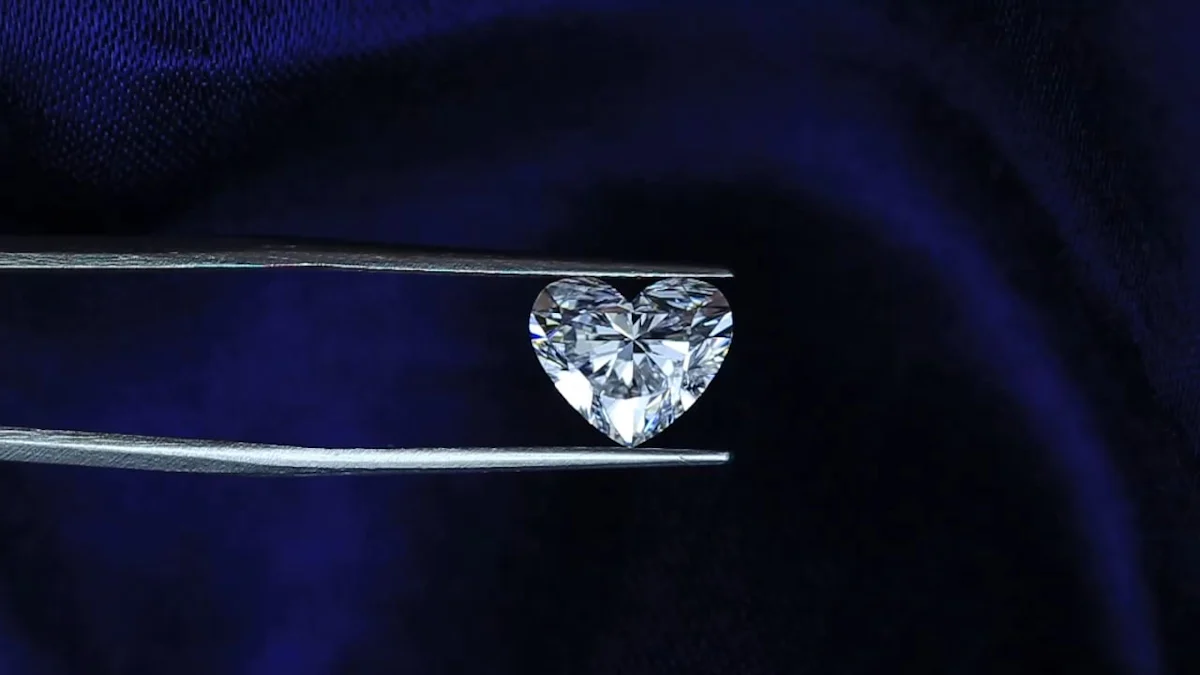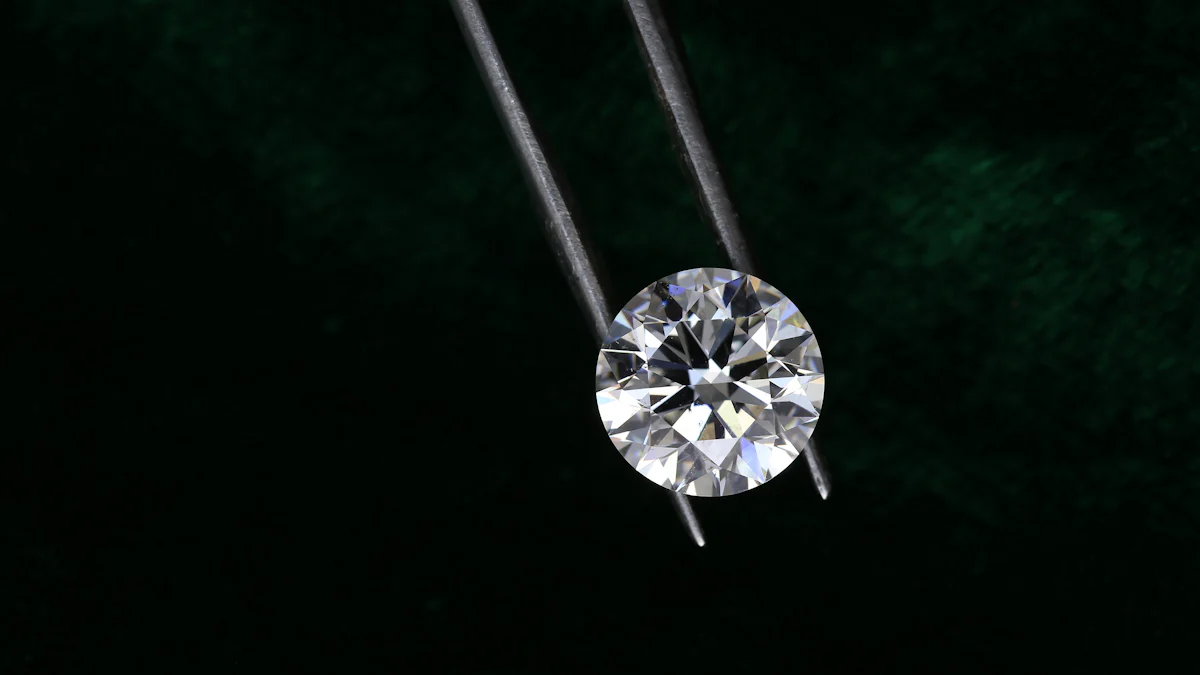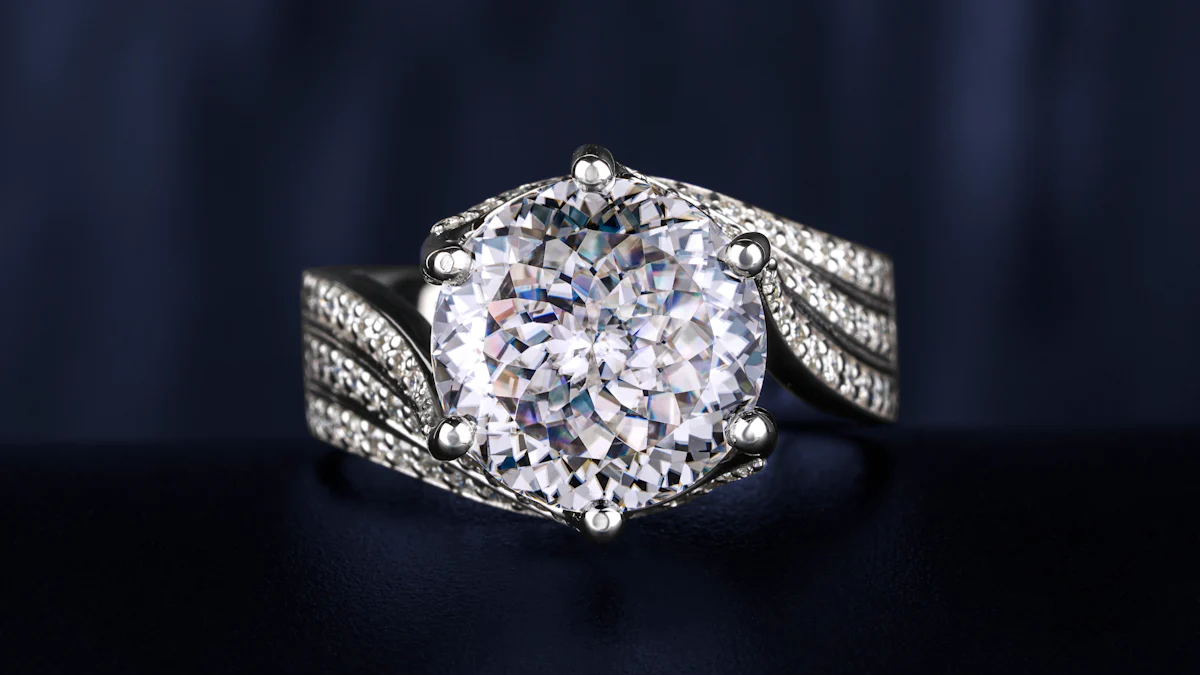Why Are Diamonds Expensive and Rare?

Diamonds captivate with their brilliance and allure, making them a symbol of luxury and commitment. Their high price and perceived rarity lead many to wonder why are diamonds expensive. Several factors contribute to this phenomenon. Geological conditions play a crucial role, as diamonds form deep within the Earth under extreme pressure and heat. Only a few locations worldwide yield these precious stones. The rarity of high-quality diamonds further elevates their value. For instance, natural color diamonds are exceptionally rare, with only 1 in every 10,000 diamonds mined exhibiting such hues. Market dynamics, influenced by historical marketing efforts, have also shaped the perception of diamonds as essential for engagement rings and other fine jewelry. This perception has driven demand, particularly for the iconic diamond engagement ring, solidifying diamonds' status as a timeless treasure.
Geological Conditions for Diamond Formation

Formation Deep Within the Earth
Diamonds originate deep within the Earth's mantle, where extreme pressure and heat transform carbon into these precious stones. This process occurs over millions of years, making natural diamonds a testament to geological time. Scientists have discovered that diamonds form at depths of 140 to 190 kilometers below the Earth's surface. Here, temperatures reach between 900 and 1,300 degrees Celsius, and pressures exceed 45,000 times the atmospheric pressure at sea level. These conditions are essential for the carbon atoms to bond in a crystal lattice, creating the diamond's renowned hardness and brilliance.
Research has shown that diamonds can form through subduction, where tectonic plates push carbon-rich materials deep into the mantle. Over time, volcanic eruptions bring diamonds closer to the surface. These eruptions create kimberlite pipes, which are the primary sources of natural diamonds. The study of these geological processes has advanced significantly, with contributions from chemists, physicists, and geologists enhancing our understanding of diamond formation.
Limited Geographic Locations
The rarity of diamonds is partly due to their limited geographic distribution. Only a few regions worldwide possess the unique geological conditions necessary for diamond formation. Major diamond-producing countries include Russia, Botswana, Canada, and South Africa. These locations have kimberlite pipes, which serve as conduits for diamonds to reach the Earth's surface.
New research into the forces that transport diamonds from the mantle to the surface has provided insights into potential undiscovered deposits. This knowledge aids in locating new diamond sources, although the number of viable sites remains small. The scarcity of these locations contributes to the high value and perceived rarity of diamonds.
Rarity of High-Quality Diamonds

The Four Cs: Carat, Color, Clarity, and Cut
The Four Cs—carat, color, clarity, and cut—serve as the cornerstone for assessing diamond quality. Each factor plays a crucial role in determining a diamond's value and rarity.
-
Carat: This measures the weight of a diamond. Larger diamonds are rarer and more valuable. A one-carat diamond is often more expensive than two half-carat diamonds due to its rarity.
-
Color: Diamonds range from colorless to various shades. Colorless diamonds are rare and highly prized. However, fancy colored diamonds, like blue or pink, are even rarer and command premium prices.
-
Clarity: This refers to the presence of internal or external imperfections, known as inclusions and blemishes. Diamonds with higher clarity grades, such as Flawless (F) or Internally Flawless (IF), are extremely rare. These diamonds exhibit exceptional brilliance due to their lack of imperfections.
-
Cut: The cut determines how well a diamond reflects light. A well-cut diamond maximizes its brilliance and sparkle. The precision of the cut can enhance a diamond's appearance, making it more desirable and valuable.
The interplay of these factors contributes to the overall rarity and allure of high-quality diamonds. Gem-quality diamonds that excel in all four Cs are particularly rare and sought after by collectors and investors alike.
Natural vs. Synthetic Diamonds
Natural diamonds form deep within the Earth's mantle over billions of years. They emerge through volcanic eruptions, making them a testament to geological processes. In contrast, synthetic diamonds are created in laboratories using high-pressure and high-temperature methods or chemical vapor deposition. These man-made diamonds offer a more affordable alternative to natural ones but lack the historical and geological significance.
While synthetic diamonds possess similar physical properties to natural diamonds, they differ in terms of rarity and value. Natural diamonds hold a higher resale value due to their unique formation and historical significance. Collectors and enthusiasts often prefer natural diamonds for their authenticity and rarity.
The market for synthetic diamonds continues to grow, offering consumers a cost-effective option without compromising on quality. However, the allure of natural diamonds remains strong, driven by their rarity and the timeless appeal they hold in the world of luxury and fine jewelry.
Market Dynamics and Historical Influence
The Role of De Beers
De Beers has played a pivotal role in shaping the diamond market. For decades, they maintained a monopolistic hold over the diamond supply, controlling 75-85% of the rough diamond distribution. This control allowed them to carefully release only enough diamonds to satisfy demand, thereby escalating prices and reinforcing the perception of diamond rarity. By stockpiling rough diamonds and using strategic marketing schemes, De Beers influenced the world's diamond producers to sell through their channels. This strategy ensured that diamond prices remained high and that diamonds were perceived as rare and valuable.
De Beers also established diamonds as the quintessential choice for engagement rings. Their marketing campaigns, such as the iconic "A Diamond is Forever" slogan, cemented diamonds' status in the world of fine jewelry. This cultural influence drove up demand, further increasing diamond prices. Even as De Beers' control decreased to 63% by 2000, their impact on the diamond market remained significant. They continued to influence supply and demand dynamics, ensuring that diamonds retained their allure and high value.
Cultural and Emotional Value
Diamonds hold a unique place in cultural and emotional contexts. They symbolize love, commitment, and luxury, making them a popular choice for engagement rings and other significant jewelry pieces. This cultural significance contributes to why diamonds are expensive. The emotional value attached to diamonds enhances their appeal, driving demand and maintaining high prices.
The brilliance and beauty of diamonds captivate people worldwide. Their rarity and the perception of diamond rarity features add to their allure. Consumers often associate diamonds with high quality and prestige, further elevating their status in the jewelry market. This emotional connection ensures that diamonds remain a timeless treasure, sought after for their beauty and symbolic meaning.
Diamonds' expense and rarity arise from their unique formation deep within the Earth, the scarcity of high-quality stones, and the influence of market dynamics. These factors create a lasting perception of value. The allure of diamonds, particularly in the form of a diamond engagement ring, has captivated people for centuries. Their historical significance and cultural symbolism enhance their appeal. As a result, diamonds remain a sought-after luxury item. The rarity of certain diamonds, such as those with exceptional clarity or color, further elevates their status. This enduring fascination ensures that diamonds continue to hold a special place in engagement rings and other fine jewelry.
FAQ
What determines the value of a diamond?
The value of a diamond hinges on the Four Cs: cut, color, clarity, and carat weight. These factors collectively influence its rarity and beauty. A well-cut diamond reflects light brilliantly, enhancing its allure. Colorless diamonds are rare and highly prized, while clarity refers to the absence of imperfections. Larger carat weights signify rarity, adding to a diamond's value.
How are diamond prices determined?
Diamond prices reflect the rarity of one or more of the Four Cs. For instance, colorless diamonds are scarce, as most diamonds exhibit tints of yellow or brown. A colorless diamond rates higher on the color grading scale, making it more valuable. Similarly, diamonds with exceptional clarity, precise cuts, or larger carat weights command higher prices. Subtle differences in these qualities can dramatically affect a diamond's value.
Are diamonds really rare?
Diamonds, like all gems, vary in rarity based on their features. Gemologists evaluate diamonds using the Four Cs: carat, color, clarity, and cut. Diamonds with rare features, such as exceptional clarity or unique colors, often cost more. While diamonds themselves are not exceedingly rare, those with specific qualities are highly sought after, influencing their price.
Why do diamonds hold cultural and emotional value?
Diamonds symbolize love, commitment, and luxury, making them a popular choice for engagement rings and significant jewelry pieces. This cultural significance enhances their appeal, driving demand and maintaining high prices. The emotional connection people have with diamonds ensures they remain a timeless treasure, sought after for their beauty and symbolic meaning.
What role did De Beers play in the diamond market?
De Beers significantly shaped the diamond market by controlling a large portion of the rough diamond supply. This control allowed them to manage diamond availability, escalating prices and reinforcing the perception of rarity. Their marketing campaigns, such as "A Diamond is Forever," established diamonds as the quintessential choice for engagement rings, further driving demand and solidifying their status in fine jewelry.
How do natural and synthetic diamonds differ?
Natural diamonds form deep within the Earth's mantle over billions of years, emerging through volcanic eruptions. They hold historical and geological significance. Synthetic diamonds, created in laboratories, offer a more affordable alternative but lack the same historical value. While both possess similar physical properties, natural diamonds maintain a higher resale value due to their authenticity and rarity.
What makes high-quality diamonds so desirable?
High-quality diamonds excel in the Four Cs, making them particularly rare and sought after. Their brilliance, rarity, and beauty captivate collectors and investors alike. Diamonds with exceptional clarity, color, and cut, combined with larger carat weights, are especially desirable. These qualities enhance their allure, ensuring they remain a symbol of luxury and prestige.
Can subtle differences in diamonds affect their value?
Yes, subtle differences in a diamond's color, clarity, cut, or carat weight can significantly impact its value. Even the slightest hint of color can make a dramatic difference. Two diamonds with the same clarity, weight, and cut may differ in value based on color alone. These nuances contribute to the intricate valuation process of diamonds.
Why are diamonds considered a timeless treasure?
Diamonds' unique formation, scarcity of high-quality stones, and market dynamics contribute to their lasting perception of value. Their historical significance and cultural symbolism enhance their appeal. As a result, diamonds continue to hold a special place in engagement rings and fine jewelry, captivating people for centuries with their brilliance and allure.
See Also
Exploring Essential Elements That Influence Diamond Ring Costs
Do Lab Created Diamonds Offer More Affordable Options?
Discovering the Charm Behind Diamond Dust Jewelry

